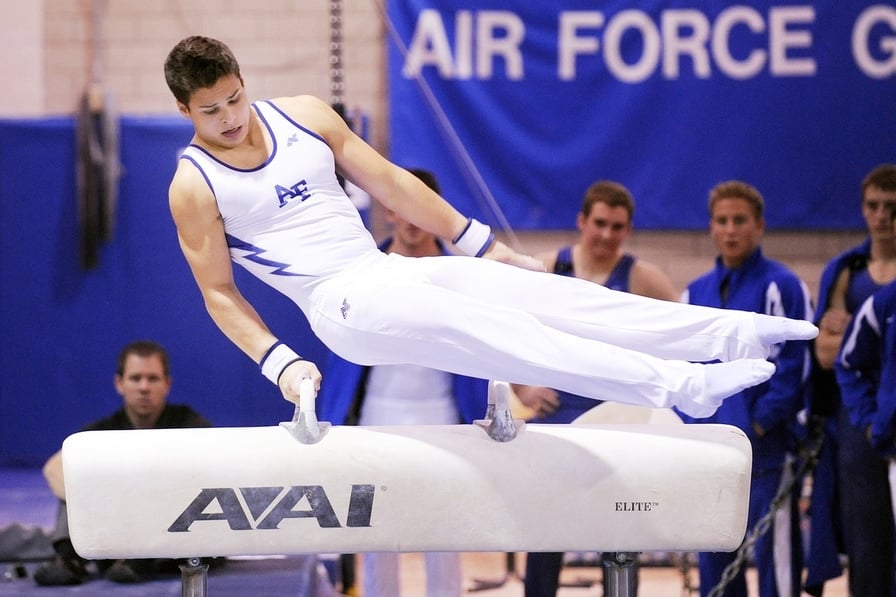Gymnastics is a broad term used to describe a range of physical activities dating back to the Egyptians in 2000 B.C.
Several other ancient societies have also documented various types of gymnastic sport in relation to conditioning and health.
The more modern competitive gymnastics is based on the work of Freidrich Jahn, who developed apparatuses including rings, parallel bars, pommel horses and horizontal bars, with the primary purpose of developing and training strength.
There are three gymnastics groups and each group includes many types of gymnastics.
The health goal of all types is to support human health in general, as gymnastics is aimed at developing and improving a person’s physical qualities.
In this article, For Kids will tell you all about the different forms of gymnastics, including what is official and what is not, and the purpose of each type.
Types of gymnastics
Table of Contents
Official types of gymnastics
a. Artistic gymnastics
Men’s artistic gymnastics
Men’s gymnastics started during the first Olympic Games and is the oldest and most popular form of gymnastics.
Males compete individually and in teams throughout six different activities:
- Floor exercises
- Pommel horse
- Vaults
- Rings
- High bars
- Parallel bars
Women’s artistic gymnastics
This is the best-known form of gymnastics with the largest number of participants.
Women compete for individual and team titles in four different competitions:
- Uneven parallel bars
- Vault
- Floor exercises
Female gymnastics is often considered a perfect combination of strength, flexibility and elegance.
b. Rhythmic gymnastics
Rhythmic gymnastics has been part of the Olympic Games since 1984 and only females can participate.
A single woman or a team of five compete with five different apparatuses, including:
You may also be interested in reading about how to choose gymnastics equipment for rhythmic gymnastics.
c. Acrobatic gymnastics
Acrobatic gymnastics is part of the United States and International Youth Olympics Program.
The team consists of two to four people of the same sex or mixed.
Players perform a show without using external instruments. They jump, hold, and balance on each other, while other team members throw and catch up with their teammates.
d. Trampoline
Trampoline is quite a new kind of gymnastics, recognized at the Olympic Games in 2000 and beyond.
In the trampoline event, the gymnast uses a double mini-trampoline to perform tricks.
In synchronous events, two athletes perform on two different trampolines simultaneously.
Both women and men can participate in this type of gymnastics.
e. Power tumbling
A power tumbling game is performed on a sprung tumbling track, where gymnasts do an explosive series of flips and twists.
A tumbling pass consists of a series of eight elements that are more complex and require a high level of skill.
Improving gymnastics skills
General gymnastics
Running, walking briskly and overcoming obstacles will all improve your motor skills.
Hygienic gymnastics
Light exercises without weights or gymnastics equipment will increase your overall muscle tone and improve your well-being.
Power gymnastics
Exercises with weights such as dumbbells, kettlebells or a barbell develop strength and enhance endurance, which will ultimately contribute to muscle building.
Rhythmic gymnastics
Energetic, rhythmic exercises (also known as cardio exercises) performed to music are aimed at burning calories and training the heart muscle.
Applied gymnastics
Therapeutic
These gymnastics classes improve the state of a patient’s health. They’re conducted under the supervision of a physician.
Usually, elements of therapeutic gymnastics are used for diseases of the respiratory organs, the cardiovascular system and the musculoskeletal system.
Military-applied gymnastics
This type of gymnastics improves the qualities required for military operations.
Sports-applied gymnastics
Gymnastic elements are used by professional athletes who compete in other sports while they’re preparing for competitions.
Profession-applied gymnastics
Gymnastics exercises are adapted to certain professions that require physical exertion. This type of gymnastics is often used by astronauts, firefighters, rescuers and pilots.
References
- Gymnastics book – Kolt, Gregory S. – Caine, Dennis J. – Western Sydney University.
- Wikipedia – Types of Gymnastics
- gymnastics-rhythmic – olympic.org
- gymnastics-artistic – olympic.org

